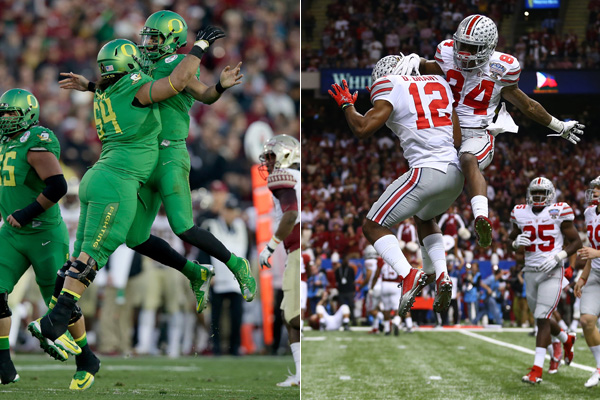They may regret it…you won’t.
Once upon a time the best NBA teams played team basketball. Auerbach’s Celtics, the Showtime Lakers, the Jordan Bulls, the Motor City Bad Boys—all had one thing in common: They won as a team.
Golden-era late 20th century professional basketball featured Russell and Bird and Magic and Jordan—guys so good they took the focus off the fact they really were just one of five. Team guys. It’s ironic that in the year 2016, on the cusp of Kobe Bryant’s retirement—his era, his generation, defined by a kind of me-first, personal branding and endorsement-heavy NBA is being mopped up like third-quarter flop sweat under the hoop.
The league showed few signs of wanting to return to team play during an almost two-decade run of your Kobes, your Garnetts, your AIs, your Vince Carters turning up on every Sprite/Adidas/Samsung/Sprint ad, but never really engendering a feeling of familiarity.
Though championships were pocketed (Bryant, notably, with five, plus one difficult-to-watch 81-point breakout) none of the teams from 1999-2014 (apologies to the 2007 Spurs and the 2011 Mavericks) can be considered among the all-time greats.
Last season, the Warriors changed all that.
Steve Nash, who came away with zero championships in the most selfless 18-year career of any man, Canadian or no, on the hardcourt is the posterboy of what we lost in the lost generation of basketball. Nash is now a consultant with the reigning champion Warriors. When pressed at a shoot around about what is different about the Warriors than most of the perennial-contending-yet-always-coming-up-short Suns, Mavs and Lakers teams he helped steer, Nash said something to the effect of, I think it’s pretty obvious in the box score.
What he meant was on any given night, nine Warriors can end up in double digits. Hell, even their back-up coach is one of the all-time greats thus far.
When the starters have an off-night, the Dubs’ bench is the igniter: Three games this year have already featured Curry, Barnes, Green, Thompson as towel waivers. “That’s how our bench ride,” understudy point guard Shaun Livingston said of a Nov. 9 “Bench Bailout” at home against Detroit. “(We’re here) to help our starters out. I don’t get into numbers. I don’t get into best bench. I don’t get into any of that. My job is to come out and relieve Steph.”
The only other team in the league who can match the Warriors’ with depth over the last decade is the 2016 Spurs.
Forward emeritus Tim Duncan will be out Monday with soreness in his right knee creating an easy if not enigmatic excuse should the Spurs drop one in the nickel dime. Even without the superstar who transcended the NBA dark ages, the Warriors have Kawhi Leonard, Tony Parker and LaMarcus Aldridge to contend with along with a cast of reserves that’s averaging almost 42 points a game. In any other season, the Spurs’ 38-6 record would be Bullsesque and they come in to Oakland with the true hot hand, having won 20 of their last 21 and 13 in a row. Thanks to the play of the entire squad—and Spurs Special Forces.
So there you have it, it’s like when those Princeton teams advance to the round of 32 except with actual athletes not future hedge fund managers on the floor.
With football out of the way, ESPN’s hoping for a ratings grab Monday. But some who haven’t watched a NBA game in a half-decade may be disappointed. You’re not going to get much as far as a NBA regular season highlight reel (stand around, someone drives and dunks) from this.
Sure Steph may launch one while the backboard does a Family Feud X impression at quarter’s end, but for the most part it’s going to be so reminiscent of Hickory that you’ll expect to see drunk Dennis Hopper (Shooter Flatch) on the sideline figuring out just how to break that press.
In other words, this isn’t your Penny Hardaway-jersey-and-jorts-wearing uncle’s NBA.
It’s much, much more evolved.

